Different Types Of Acoustic Guitars Explained And Recommended
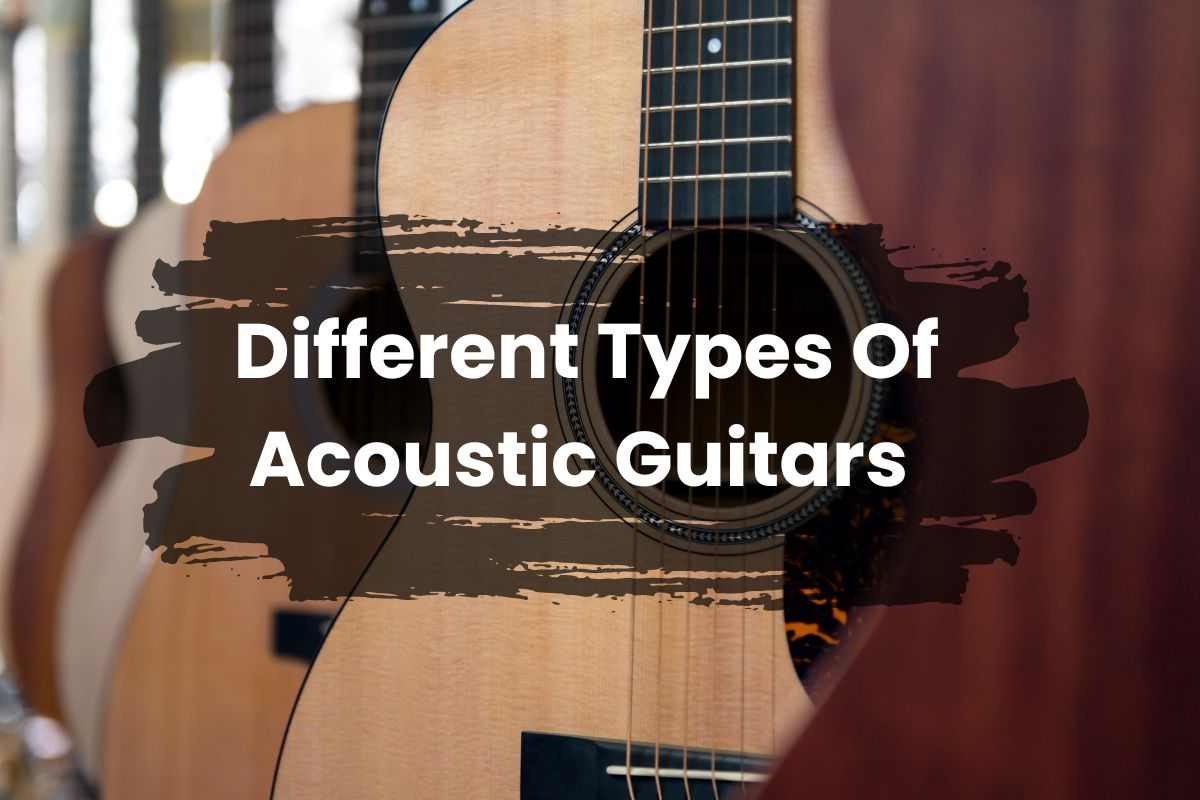
Are you looking to buy a brand-new acoustic guitar? You may think getting a cheap one may seal the deal but you are wrong!
If you look closely at guitars from two different brands, you will notice that they are never the same. Each manufacturer has their iteration of the classic guitar body shapes, each with their way of giving the user value.
So, why not discover all the types of acoustic guitars available in the current market? The most common types are the dreadnought and the concert shapes. But did you know there are a few more that might be better up your alley?
Let’s find out!
Know The Types Of Acoustic Guitars In 30 Seconds!
- Steel Stringed Acoustic
- Dreadnought guitars
- Orchestra Model
- Parlor
- Nylon String Guitars
- Classical Guitars
- Flamenco Guitars
- Hybrid Guitars
- Archtop Guitar
- Gypsy Jazz
- 12 String Guitars
- Junior Guitars
- Resonator Guitar
- Silent Guitar
Types of Acoustic Guitars
The choices you have when you look for acoustic guitars may confuse you as each type has something different to offer. The most common acoustic guitar is the versatile steel-stringed flat top. For generations, this has been used by musicians far and wide across many genres.
They are loud and proud and have been for the last decade or more.
Let’s categorize acoustic guitars into sections namely, steel strings, nylon strings, hybrid, archtops, and a few special mentions.
Steel Stringed Acoustic Guitar
This is perhaps the most common guitar setup you can find. Steel-stringed guitars have a bright and crisp sound. You can use these guitars in different scenarios such as strumming, fingerpicking, and even solos. Steel-string acoustics come in these primary shapes:
Dreadnought Guitars
The most popular shape is the Dreadnought, named after the British battleship HMS Dreadnought. This large body shape was first developed by C.F. Martin & Co. in 1916. This body size results in high volume and rich bass, great for most singer-songwriters.
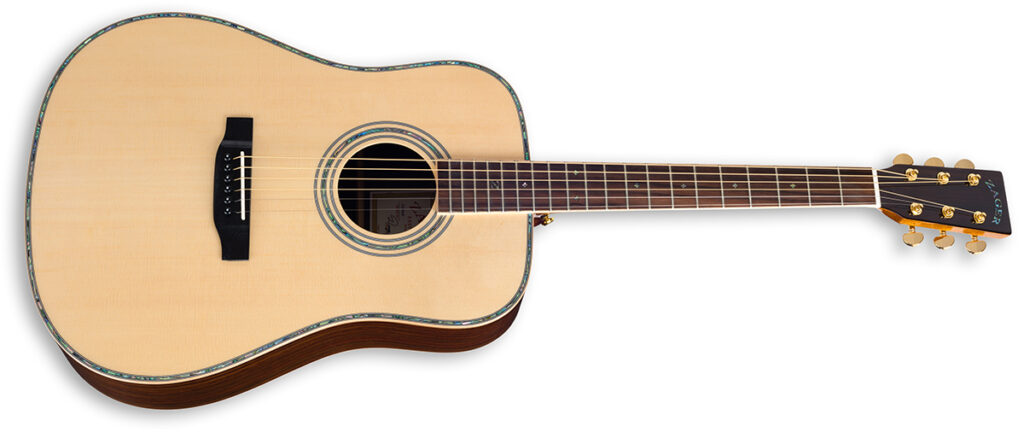
They usually have a square shoulder and a large internal cavity that creates their robust sound. Dreadnoughts come in two main variants: the traditional square shoulder and the slope shoulder. Slope shoulder dreadnoughts have rounded upper and lower bouts. This alters the classic sound to be more mid-heavy.
Orchestra Model (OM)
The OM model is slightly smaller than the Dreadnought shape. They have a well-balanced sound that is great for both strumming and fingerpicking. The sound from the OM model has a little less bass but well balanced overall.
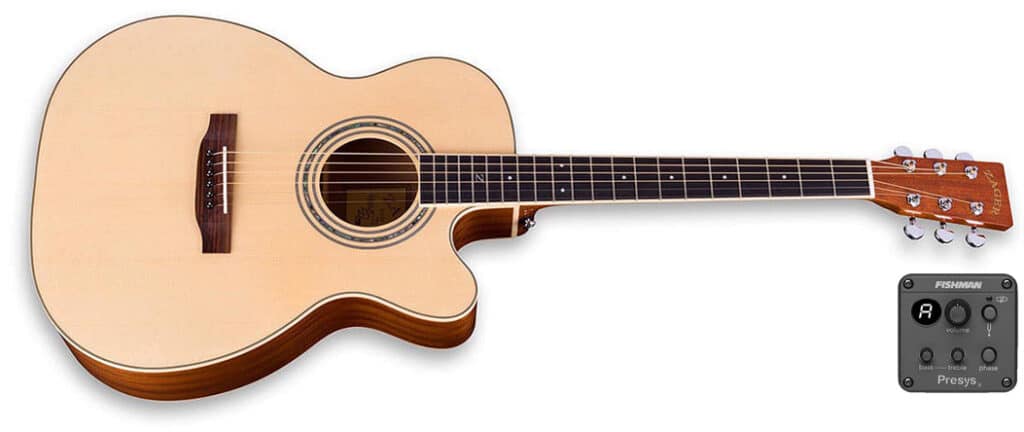
Due to the smaller size, fingerstyle guitarists love the OM shape for clarity and note. Its body shape is more ergonomic with longer upper and lower bouts and a small waist.
Parlor Guitar
This is the smallest acoustic guitar you can find made for adult guitarists. The Parlor guitar has a small body but produces a very vintage sound. Blues and folk guitarists love this guitar for its unique sound. This small size results in a gritty boxy tone that packs a punch.
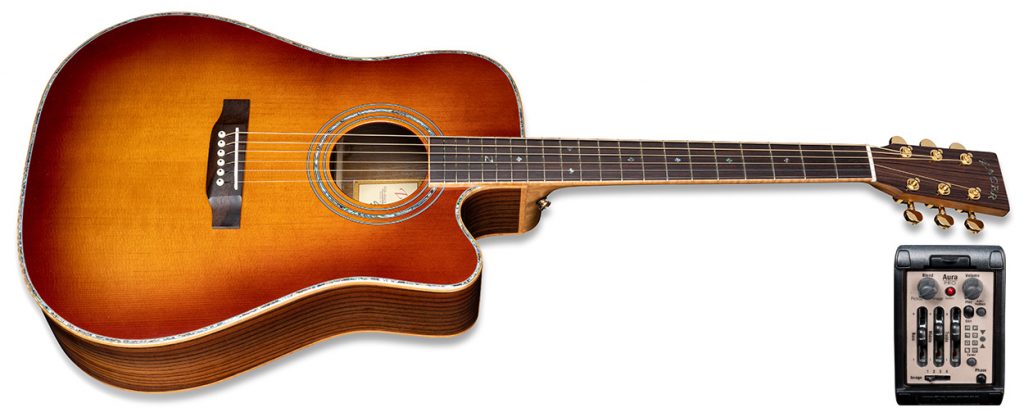
Although in a small frame, the parlor guitar is ideal for fingerpicking. They require a more precise touch to properly “activate the top.” In other words, you have to put in some strength for the guitar’s body to sound the way it is meant to.
Check Out Zager guitars by Sizes
| Guitar Sizes | Models |
|---|---|
| 41″ Full-Size Dreadnought | – ZAD20 – ZAD20E – ZAD50CE – ZAD80 – ZAD80CE Aura – ZAD900 – ZAD900CE |
| 40″ Orchestra Model (OM size) | – ZAD50 OM – ZAD50CE OM – ZAD80 OM – ZAD80CE OM – ZAD900 OM – ZAD900CE OM |
| 38″ Parlor Size | – Parlor Size Mahogany – Parlor Size Mahogany Electric |
| 36″ Travel Size | – Travel Size Mahogany – Travel Size Mahogany Electric |
Nylon String Guitars
Nylon string guitars are very particularly friendly to beginner guitarists due to their choice of soft strings. Classical guitarists also love the gentle and warm sound. They have a softer and more mellow sound that appeals ideal for classical and flamenco music.
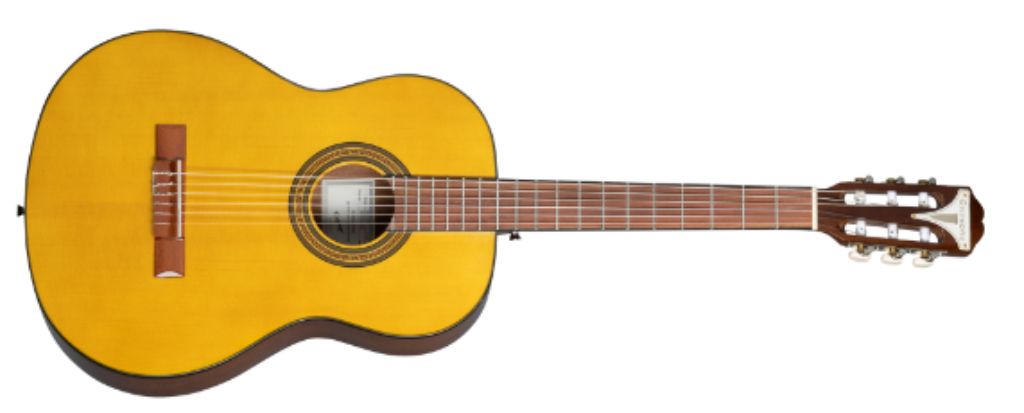
It is recommended for students, beginners, and children. They have low string tension and lack some of the sustain and brightness heard from steel strings.
Here are the different types of nylon string guitars available in the market now
Classical Guitars
Classical guitars, as the name suggests, are used for classical music. They produce a clear tone similar to a piano’s timbre. It sounds glassy with moderate volume.
Modern classical guitars blend traditional design with new-age manufacturing techniques and materials. This makes them sound great while also making them a visual treat to see.

Classical guitars usually have a smaller than the dreadnought but larger than a parlor guitar. Think of a classical guitar similar to the Orchestra Model but with a wider nut width, 0.2 to 0.3. This wider spacing allows for more space on the fretboard for intricate fingerpicking.
Flamenco Guitars
Flamenco guitars are similar to classical guitars but are distinguished by tap plates. Flamenco players tap the body excessively which protects the guitar through these plates.
The action on flamenco guitars is lower than on classical guitars which helps in fast-paced riffs and strumming. Flamenco guitars have a wider nut width for more space on the fretboard. They give the player more space for finger techniques synonymous with the flamenco style.

Hybrid Guitars
Hybrid guitars can also be called crossover guitars. They are suitable for a blend of different styles for those who love experimenting. This can include guitars with cutaways, acoustic-electric variants, or standard guitars that use both nylon and steel strings.
Hybrid guitars come in various sizes like mini (½ ) and three-quarter (¾) models. These smaller guitars are made for beginners, young players, or those with smaller hands.

Archtop Guitars
Archtop acoustic guitars are primarily made for jazz musicians. They have a warm, punchy tone with controlled sustain. The defining feature of these guitars is the arched top. This arched shape is made from carved spruce or maple giving the guitar a warm yet punchy sound. Lower sustain is loved by jazz musicians as each note can be heard clearly.

Archtops excel in a style known as comping. Here a guitarist plays chords to support a soloist. The sound needed for this has to be dynamic This style requires a dynamic response that can also be muted when needed. The guitar’s sound complements other instruments like the brass, woodwinds, and double bass.
Gypsy Jazz Guitars
The Gypsy jazz guitar is designed with the fiery style of this gypsy jazz music in mind. They have a large body and a longer neck. They have a D-style or oval sound hole with a sound similar to archtops.
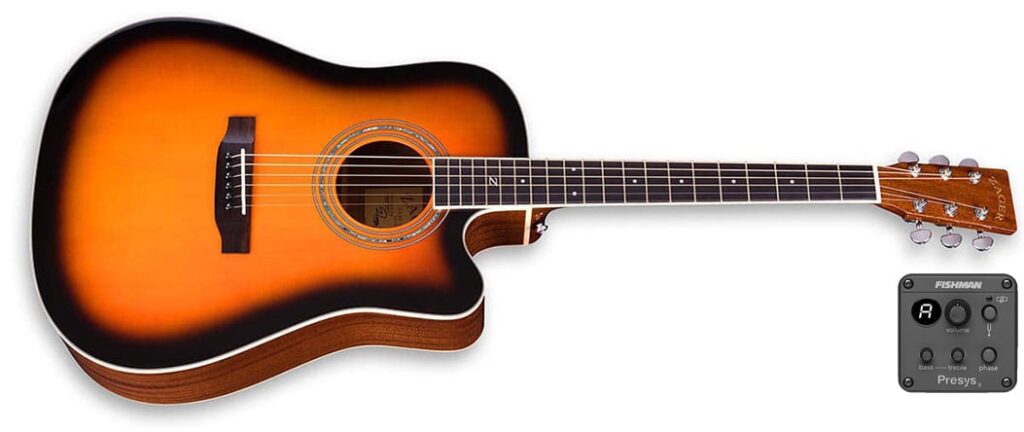
However, they add to the archtop sound through a percussive and snappy output. These guitars come in both nylon and steel string variants.
12-String Acoustic Guitar
As the name suggests, 12-string acoustic guitars have double the number of strings. The extra strings add more harmonics to the overall sound of the guitar. The sound is rich and full similar to that of a choir. 12 string guitars may be difficult to use as you primarily use them to strum. Bending or soloing is more difficult due to the additional string tension but it is not impossible!
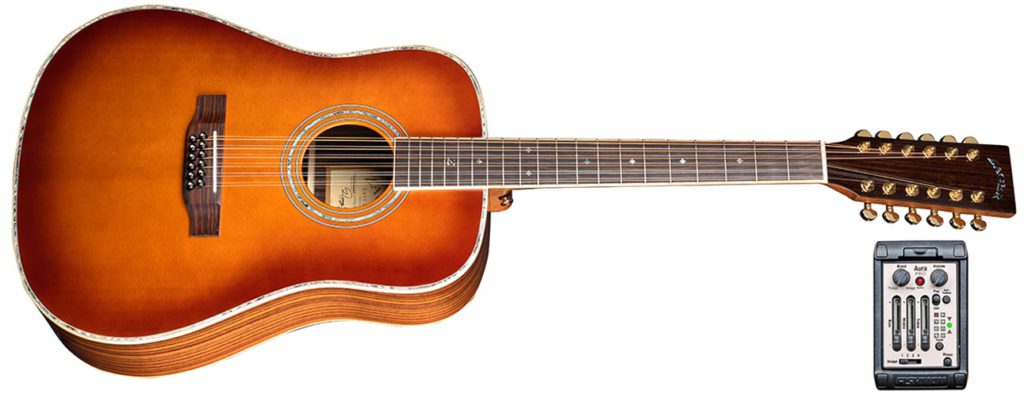
Junior Guitars
These 3/4 size acoustic guitars are mostly made for children and come with fewer frets They are under the parlor guitar category due to their size. However, not all parlor guitars are junior guitars though. Junior guitars usually come in come in ½ size whereas parlor guitars come in a standard ¾ size.
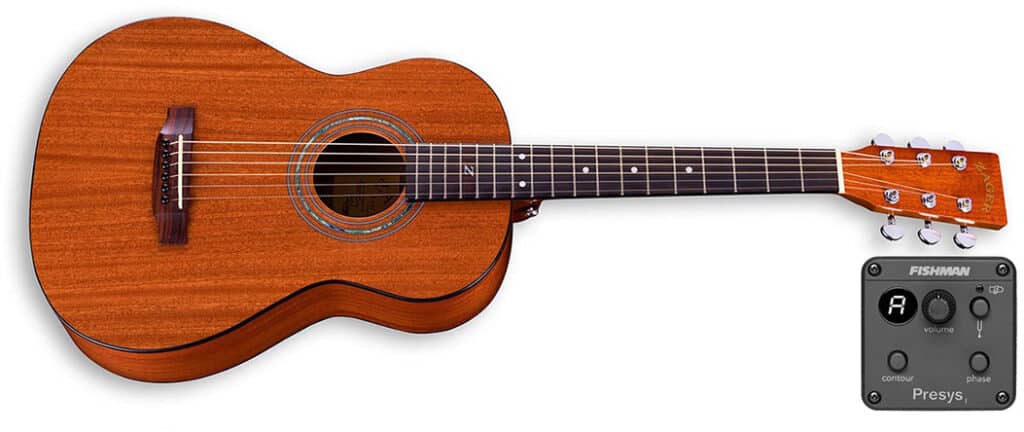
Resonator Guitar
These guitars have a metal resonator that replaces the traditional wooden soundboard. They produce a bright, loud, and metallic tone. This sound is well-suited to slide techniques found in bluegrass, blues, and country music. The resonator guitar’s sharp, twangy sound can be heard in Mark Knopfler’s Romeo and Juliet.

Silent Guitars
These guitars are designed for musicians who look for portability above anything. These guitars have a skeletal body and need to be amplified. Despite this quirky design, they can deliver the sound and playing feel of traditional acoustic guitars.

Check out this video for more information on acoustic guitar types
Different Acoustic Guitar Sizes
Now that we have covered acoustic guitar shapes let’s look into the different sizes they come in and what genre of music they are suited for.
| Body Shape | Scale Length | Body Size | Best For |
| Parlor | 24″ – 25″ | Small | Travel and folk music |
| Mini/Junior | 22.75″ – 24″ | Very Small | Children, Beginners |
| Traveler | Variable | Small to Medium | Portability |
| 3/4 Size | 23″ – 24″ | Small | Children, Adults with smaller builds |
| OM (Orchestra) | 25.4″ | Medium | Fingerstyle guitarists |
| Dreadnought | 25.4″ – 25.5″ | Large | Bluegrass guitarists |
| Jumbo | 25.5″ – 26″ | Very Large | Concerts and live acoustic settings |
| 12-String | 25.5″ – 26″ | Large | Rhythm Guitarists |
| Resonator | 25″ – 25.5″ | Medium to Large | Bluegrass, blues, slide guitar |
| Archtop | 25″ – 25.5″ | Medium to Large | Jazz musicians |
| Gypsy Jazz | 26.4″ | Large | Gypsy jazz |
What Tonewoods Should I Look Out For?
Acoustic guitars come in many different choices of tonewoods that give each their unique sound. The tonewood also decides how durable a guitar is and how expensive a guitar can be. Here’s a breakdown of some different acoustic guitar tonewoods you can come across:
| Tonewood | Characteristics |
| Spruce | Spruce is the most popular choice for the top acoustic guitars. They have excellent sound responsiveness and a broad dynamic range that creates a crisp tone. |
| Cedar | Cedar is softer than spruce and has a warm tone. It responds well to light touch favored by classical guitarists. |
| Mahogany | Mahogany is dense and stiff making it very durable. It has a heavy midrange with great sustain |
| Rosewood | Rosewood produces a resonant sound, with great overtones. It produces a deep bass and brilliant trebles. |
| Maple | Maple is known for its clear and bright high frequencies. It is more focused with less resonance |
| Koa | The sound from Koa sits between mahogany and rosewood. It starts with a bright sound that grows warmer with time. |
| Walnut | Walnut is similar to mahogany but has a slightly brighter tone. |
| Ovangkol | Ovangkol shares many tonal properties with rosewood, including a full range and rich overtones. However, it may have a slightly fuller midrange and with less bright top end. |
| Sapele | Similar to mahogany, sapele has a robust midrange and consistent tone. It’s often used for both the body and the top of the guitar. |
Should I Get a Laminate Or Solid Wood Guitar?
Solid Wood Guitars
These guitars are crafted entirely from solid pieces of wood cut directly from the tree and carefully shaped. Some common tonewoods include spruce, mahogany, and rosewood. Solid wood guitars have a rich, full-bodied sound. As the wood matures it tends to improve with age.
These guitars can be more expensive and must be seen as a long-term investment for serious musicians. They are also sensitive to humidity and temperature requiring proper maintenance when stored. Some solid wood guitars can also come with onboard electronics for amplification.
Laminate Wood Guitars
On the other hand, laminate guitars are the most common type of guitar you will find market. They are relatively inexpensive but still have great sound. Laminate wood has multiple thin layers of wood glued together under pressure. It is less expensive to produce than solid wood and it is widely available. This type of guitar is more resistant to changes in humidity and temperature.
These guitars may not resonate as freely as solid wood but with the new models have improved quality with research. They have a rich tone but not as great as a solid wood guitar. These guitars are best for beginners, casual players, and even veterans in some cases.
9 Tips To Follow When Choosing An Acoustic Guitar
Choosing the right acoustic guitar can be difficult sheerly due to the thousands of choices available. Here are some practical tips to you should keep in mind when selecting an acoustic guitar.
- Set a Realistic Budget: Before you start shopping you need to know how much you are willing to spend. A cheap acoustic guitar can be okay for a child. If you are serious about playing the guitar do not hesitate to spend a bit more to get one that will last longer
- Acoustic or electric: if you are just starting your guitar journey, a standard acoustic guitar will do just fine. However, if you plan to play live, try to get one that can be plugged into an amp.
- Find a Comfortable Size: Acoustic guitars come in many body shapes. Each shape has a distinct sound. Sure a larger dreadnought is the choice for most guitarists. However, their larger size may not be comfortable for you if you have a smaller build.
- Thoroughly Check Before Buying: This tip is more in line with those who want to buy a used guitar or an ultra-budget one. You can buy a premium used guitar for cheap but you never know the abuse it has gone through. Similarly, budget guitars may cut corners to keep the price low. So inspect the guitar for any signs of poor construction, such as uneven frets, loose parts, or poor finishing.
- Physically Play Before You Buy: Visit stores in person to test out a guitar, if possible multiple times. You can have someone more experienced play it for you. Someone else can simply have a connection with the guitar that you might not have.
- Look for Comfortable Necks: The neck size and shape should fit comfortably in your hand. It should be just right so that your hand can easily move along the fretboard.
- Guitar Maintenance Needs: If you live in highly humid conditions, it is best to get a solid wood guitar with a good humidifier. Since solid good guitars are more susceptible to weather changes getting a humidifier is very important.
- Seek Expert Advice: An experienced guitarist can give you great insights on which guitar should be best for you. Their recommendations are invaluable as they will give you a non-biased opinion as opposed to a store clerk.
- Do A Lot of Research: Read reviews and watch videos on the guitar you want to buy. Research different brands and models on online forums, review sites, and YouTube channels for insights on a guitar you want to buy.
Frequently Asked Questions
There are many types of acoustic guitars to choose from. Among them, the most common and popular ones are the dreadnought, concert, OM, parlor, and grand auditorium shapes.
Thin picks should be used with acoustic guitars. Although this answer can vary across guitarists, thin picks have sound reproduction. A thin pick can be under 0.75mm which makes it great for strumming.
You technically can use one if you want to. However, we do not recommend it as you will not get the desired volume and range from them. Another reason why it is not recommended is acoustic guitars and electric guitars have different string tension that may ruin the intonation of the guitar overall.
If you live in a dry area with high humidity, we recommend using a guitar humidifier to protect your guitar. Harsh weather can develop cracks in solid wood guitars that are irreparable. Alternatively, you can choose to go with a laminated guitar as they are less susceptible to weather changes, at the cost of sound.
Which Type Are You Interested In?
There are many factors you need to weigh before you find the perfect guitar for you. We hope this guide can help figure out at least some of these factors. At the end of the day, it is you who has to decide according to what feels right for you. The best guitar is only the best when it fits your budget and inspires you to play and grow as a musician.
